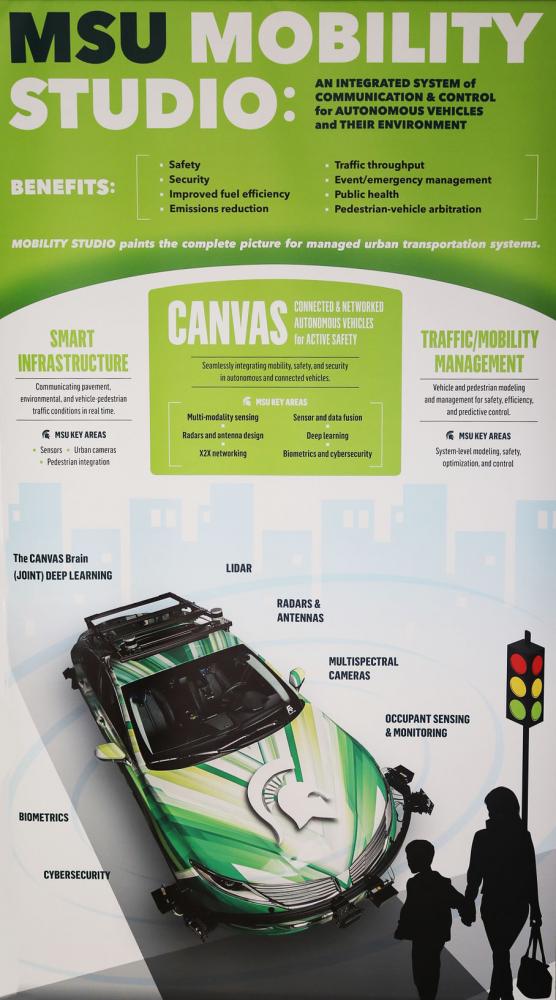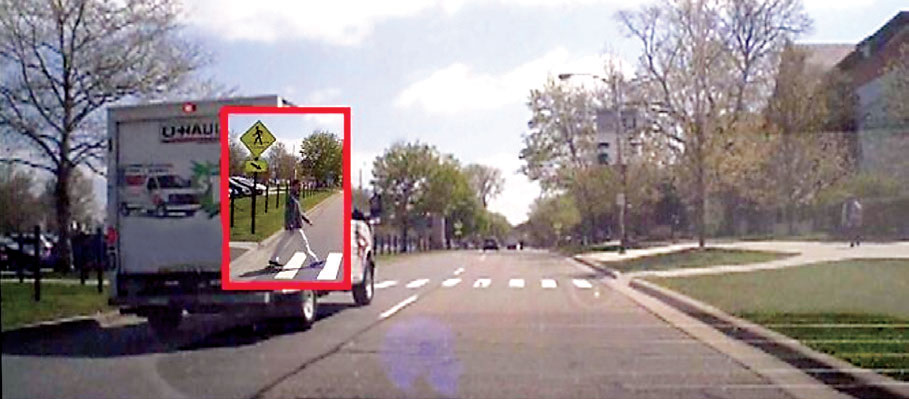Michigan State University Mobility Studio
The MSU Mobility Studio is an integrated system of communication and controls for autonomous and connected vehicles and their environment.

Research within Mobility Studio is focused on:
- SMART INFRASTRUCTURE
communicating pavement, environmental, and vehicle-pedestrian traffic conditions in real time - TRAFFIC/MOBILITY MANAGEMENT
providing vehicle and pedestrian modeling and management for safety, efficiency, and predictive contro
CANVAS
the centerpiece of the MSU Mobility Studio, seamlessly integrating mobility, safety, and security in autonomous and connected vehicles
Benefits
- enhanced safety and security
- pedestrian-vehicle arbitration
- improved fuel efficiency
- emissions reduction
- public health
- traffic throughput
- event/emergency management
Mobility & connectivity integration
CANVAS focuses on integrating systems controlling autonomous vehicles from the ground up—and from the inside out.
- A NETWORKED, INTEGRATED SYSTEM OF SENSORES within individual and connected communicating vehicles, and the infrastructure itself (roadbeds, traffic signals, etc.), will not only enable enhanced safety, but can provide data to the traffic grid to influence signals, improve traffic flow, reduce fuel consumption, and help municipalities mitigate air quality concerns.
- COMMUNICATION with other vehicles and the infrastructure surrounding it could detect other vehicles that are approaching an intersection and recognize whether the other vehicle is going to stop in time.
- A CONNECTED VEHICLE could be used to synchronize traffic lights, so traffic can move more efficiently and reduce backups.
- BIOMETRICS & RECOGNITION TECHNOLOGY to monitor not only the identity but also the health and well-being of a vehicle’s occupants, and evaluate whether a human is capable and ready to take over in the event of a problem. If a vehicle occupant is unable to drive, the technology can detect that and pull the car over to the side of the road.




